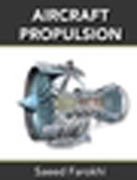
Aircrarft Propulsion presents thorough coverage of fundamental concepts alongwith numerous detailed examples and extensive illustrations. This accessible introduction first discusses compressible flow with heat and friction as well as engine thrust and performance parameters. Readers will then learn about aircraft gas turbine engine cycles followed by aircraft engine components. And they'll discover the aerodynamics and performance of centrifugal compressors. INDICE: Chapter 1. Introduction. 1.1 History of Airbreathing Jet Engine: A20th Century Invention. 1.2 Innovations in Aircraft Gas Turbine Engines. 1.2.1 Multi-Spool Configuration. 1.2.2 Variable Stator. 1.2.3 Transonic Compressor. 1.2.4 Low-Emission Combustor. 1.2.5 Turbine Cooling. 1.2.6 Exhaust Nozzle. 1.2.7 Modern Materials and Manufacturing Techniques. 1.3 New Engine Concepts. 1.3.1 Wave Rotor Topping Cycle. 1.3.2 Pulse Detonation Engine. 1.3.3 Millimeter-Scale Gas Turbine Engines: A Triumph of MEMs. 1.3.4 Combined Cycle Propulsion: Engines from Takeoff to Space. 1.4 New Vehicles. 1.5 Summary. 1.6 Roadmap for the Book. 1.7 References. Problems. Chapter 2. Compressible Flow with Friction n and n. 5.23 A Convergent Nozzle or De Laval? 5.24 The Effect of Boundary Layer Formation on Nozzle Internal Performance. 5.25 Nozzle Exit Flow VelocityCoefficient. 5.26 Effect of Flow Angularity on Gross Thrust. 5.27 Nozzle Gross Thrust Coefficient. 5.28 Over Expanded Nozzle Flow - Shock Losses. 5.29 Nozzle Area Scheduling, A8 and A9/A8. 5.30 Nozzle Exit Area Scheduling, A9/A8. 5.31 Nozzle Cooling. 5.32 Thrust Reverser and Thrust Vectoring. 5.33 Hypersonic Nozzle. 5.34 Exhaust Mixer and Gross Thrust Gain in a Mixed-Flow Turbofan Engine. 5.35 Nozzle-Turbine (Structural) Integration. 5.36 Summary of Exhaust Systems. 5.37 References. Problems. Chapter 6. Combustion Chambers and Afterburners. 6.1 Introduction. 6.2 Laws Governing Mixture of Gases. 6.3 Chemical ReactionStall Blade Selection. 7.14.2 Compressor Annulus Design. 7.14.3 Compressor Stall Margin. 7.15 Summary. 7.16 References. Problems. Chapter 8. Centrifugal Compressor Aerodynamics. 8.1 Introduction. 8.2 Centrifugal Compressors. 8.3 Radial Diffuser. 8.4 Inducer. 8.5 Inlet Guide Vanes (IGVs) and Inducer-less Impellers. 8.6 Impeller Exit Flow and Blockage Effects. 8.7 Efficiency and Performance. 8.8 Summary. 8.9 References. Problems. Chapter 9. Aerothermodynamics of Gas Turbines. 9.1 Introduction. 9.2 Axial-Flow Turbines. 9.2.1 Optimal Exit Swirl Mach Number. 9.2.2 Turbine Blade Losses. 9.2.2.1 Blade Profile Loss. 9.2.2.2Secondary Flow Losses. 9.2.2.3 Annulus Losses. 9.2.2.3.1 Turbine Rotor Tip Clearance Loss. 9.2.3 Optimum Solidity. 9.2.4 Turbine Cooling. 9.2.4.1 Convective Cooling. 9.2.4.2 Impingement Cooling. 9.2.4.3 Film Cooling. 9.2.4.4 Transpiration Cooling. 9.3 Turbine Performance Map. 9.4 The Effect of Turbine Cooling on Efficiency. 9.5 Turbine Blade Profile Design. 9.5.1 Angles. 9.5.2 Other Blade Geometric Parameters. 9.5.3 Throat Sizing. 9.5.4 Throat Reynolds Number. 9.5.5 Turbine Blade Profile Design. 9.5.6 Blade Vibration and Campbell Diagram. 9.5.7 Turbine Blade and Disk Material Selection and Design Criteria. 9.6 Stresses in Turbine Blades and Disks and Useful Life Estimation. 9.7 Axial-Flow Turbine Design and Practices. 9.8 Gas Turbine Design Summary. 9.9 Summary. 9.10 References. Problems. Chapter 10. Aircraft Engine Component Matching & Off-Design Analysis. 10.1 Introduction. 10.2 Engine (Steady-State) Component Matching.10.2.1 Engine Corrected Parameters. 10.2.2 Inlet-Compressor Matching. 10.2.3 Compressor-Combustor Matching. 10.2.4 Combustor-Turbine Matching. 10.2.5 Compressor-Turbine Matching & Gas Generator Pumping Characteristics. 10.2.5.1 Gas Generator Pumping Characteristics. 10.2.6 Turbine-Afterburner- (Variable-Geometry) Nozzle Matching. 10.2.6.1 Fixed-Geometry Convergent Nozzle Matching. 10.3 Engine Off-Design Analysis. 10.3.1 Off-Design Analysis of a Turbojet Engine. 10.3.2 Off-Design Analysis of an Afterburning Turbojet Engine. 10.3.3 Off-Design Analysis of a Separate-Flow Turbofan (2-Spool) Engine. 10.4 Un-choked Nozzles and Other Off-Design Iteration Strategies. 10.4.1 Un-choked Exhaust Nozzle. 10.4.2 Un-choked Turbine Nozzle. 10.4.3 Turbine Efficiency at Off-Design. 10.4.4 Variable Gas Properties. 10.5 Summary. 10.6 References. Problems. Chapter 11. Chemical Rockets & High-Speed Propulsion. 11.1 Introduction. 11.2 From takeoff to Orbit. 11.3 Chemical Rockets. 11.4 Chemical Rocket Applications. 11.4.1Launch Vehicles. 11.4.2 Boos Engines. 11.4.3 Space Maneuver Engines. 11.4.4 Attitude Control Rockets. 11.5 New Parameters in Rocket Propulsion. 11.6 ThrustCoefficient, CF. 11.7 Characteristic Velocity, c*. 11.8 Flight Performance. 11.9 Multi-Stage Rockets. 11.10 Propulsive and Overall Efficiency. 11.11 Chemical Rocket Combustion Chamber. 11.11.1 Liquid Propellant Combustion Chambers. 11.11.1.1 Some Design Guidelines for Injector Plate. 11.11.1.2 Combustion Instabilities. 11.11.2 Solid Propellant Combustion Chambers. 11.12 Thrust Chamber Cooling. 11.12.1 Liquid Propellant Thrust Chambers. 11.12.2 Cooling of Solid Propellant Thrust Chambers. 11.13 Combustor Volume and Shape. 11.14 Rocket Nozzles. 11.14.1 Multi-Phase Flow in Rocket Nozzles. 11.14.2 Flow Expansion in Rocket Nozzles. 11.14.3 Thrust Vectoring Nozzles. 11.15 High-Speed Airbreathing Engines. 11.15.1 Supersonic Combustion Ramjet. 11.15.1.1 Inlet Analysis. 11.15.1.2 Scramjet Combustor. 11.15.1.3 Scramjet Nozzle. 11.16 Rocket-Based Airbreathing Propulsion. 11.17 Summary. 11.18 References. Appendices. A. U.S. Standard Atmosphere. B. Isentropic Table. C. Normal Shock Table. D. Rayleigh Flow Table. E. Fanno Flow Table. F. Prandtl-Meyer Function. G. Oblique Shock (Plane). H.Conical Shock. I. Cascade Data.
- ISBN: 978-0-470-03906-9
- Editorial: John Wiley & Sons
- Encuadernacion: Cartoné
- Páginas: 820
- Fecha Publicación: 04/03/2008
- Nº Volúmenes: 1
- Idioma: Inglés
